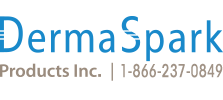It’s no secret that as we age, our skin matures and ultimately begins to show signs of aging. We’ve all seen the wrinkles or dark spots on our faces and wished we could make them vanish. Skin rejuvenation provides people with the opportunity to restore and renew the appearance of their skin. The restoration treatments are usually for visible skin concerns such as dark spots, scarring, and wrinkles.
Typically, the treatment focuses on specific facial features. However, it can be performed on the skin in other areas of the body like the chest, hands, and neck. Skin rejuvenation may be accomplished through surgical and non-surgical methods. These assorted types of treatments can range in invasiveness and all come with their fair share of risks. These procedures have high success rates and have consistently proven to make an individual’s skin appear more radiant and youthful.
Types of Treatments
There are several dozen rejuvenation treatments for correcting external skin concerns. For instance, laser skin rejuvenation is one of the most common and effective skin resurfacing procedures. This treatment plan utilizes a laser to enhance the complexion that might have been damaged by the sun, chickenpox or even acne scars. This method decreases the appearance of the minor imperfections an individual might be insecure about.
Another popular non-surgical skin rejuvenation treatment is using neurotoxins. In the simplest sense, this method of skin restoration guarantees a way to relax overactive, wrinkle-causing muscles. Neurotoxins are injected directly into the muscle area using a needle. Popular forms of neurotoxins used around the world include Botox, Dysport, and Xeomin.
Sometimes, individuals may choose to proceed with a more invasive method such as a facelift. Essentially Facelifts procedures strive to lift and tighten drooping skin on the face and neck. This approach is more aggressive as it requires major surgery but is known to have incredible results. These are only three of the most standard treatments done around the world, however, there are so many others like HydraFacial, Microneedling, and Dermabrasion. It’s important to recognize that there are various treatment options in place that serve different purposes and focus on repairing distinct features. Thus why a facelift would appeal to a group of people trying to achieve a younger look and tighten sagging skin. Whereas, a Microdermabrasion treatment would interest individuals who desire to even out skin tones throughout their face.
How Permanent is Skin Rejuvenation?
On average most rejuvenation treatments vary in length of lasting before needing to revamp the procedure. Many factors come into play for the expectancy time and overall durability of the treatment. For instance, the patient’s age and general response to the method will have an impact on the viability of the procedure. Although medical professionals and dermatologists can’t predict exactly how long one’s body could endure the treatments, they provide a general time frame for each procedure.
For example, Facelifts are expected to produce results that last at least ten years. Neurotoxin treatments generally last for 3 to 4 months. Laser skin resurfacing and other energy-based treatments like IPL practices are presumed to last anywhere from 3 to 5+ years. The results of microneedling last approximately for three to five months. So, many patients chose to schedule follow-up treatments twice a year to maintain their results.
So, skin rejuvenation isn’t a catch-all term. There are a multitude of ways to rejuvenate the skin, and these depend on each individual skin concern.
Written by: Tali Pinsker


